Each student had to do create a multimedia package focusing on anyone of their choosing within the Marquette community; it could be another student or an administrator, faculty member, employee, etc., on or near campus. The New York Times' "One in 8 Million" collection of audio slideshows served as inspiration and the projects were to each consist of two parts: a 650-word profile and a three-minute video created using Final Cut Pro X. The videos were uploaded to YouTube, then embedded above their text stories on a page on their individual Weebly websites.
The class focused considerably on writing profiles this spring, but spent just a couple periods on using video. One day we looked at examples from TheMorganList.com, a collection of videos about people at Morgan State University and produced by students taught there by my friend, Jerry Bembry; another day we reviewed "Al's 10 Video Commandments," a presentation on the do's and don'ts that Al Tompkins shared atthe inaugural Teachapalooza in 2011.) The class also had the "Video Storytelling for the Web" and "Reporting, Writing for TV and the Web: Aim for the Heart" modules as part of a certificate program offered by the Poynter Institute's News University.
Making me even more nervous: The students insisted on using the higher-end cameras they could sign out from the Diederich College of Communication's technology center instead of their smartphones. Good for them! Unlike in past semesters, though, we spent no class time learning how to use the equipment. Anyway, after turning in three full-fledged story ideas each – just in case a preferred one fell through – the students went about doing their projects.
After three weeks of working on them, the class helped me critique each effort. To my relief, they all were credible, if not more so. Several focused on Marquette peers. They included the state governor's son; one focused on serving others; a theater set designer; an international student; a Muslim; a hip-hop dancer; one hundreds of miles from his family still reeling from superstorm Sandy; one with cerebral palsy and one needing a guide dog because of blindness. The other projects featured the owner of a popular eatery; a diversity counselor and social justice instructor; a music curator and three faculty members who teach law, political science and German, respectively.
Two of the projects particularly stood out and deserve a look from anyone reading this post. Benjamin Greene profiled Kal Riebau, a student manager for the men's basketball team despite having only one arm. Given that his video was done after basketball season – that's why there's no footage of Riebau doing his manager duties or engaging with the team – Greene's classmates and I agree that any criticism from this instructor would be nitpicking.
Then there's Christopher Chavez, who is always trouble. "I know we're not supposed to use music," he said to me the week before the projects were due, "but I made it work." After watching his piece on Tyler Leverington, a track team member who is also a first-year law student, I agreed: Chavez made it work. The music level could be reduced some more, but just like with Greene's effort on Riebau, the editing quality in the Leverington piece is outstanding.
And, never one to miss an opportunity, Chavez has taken his coursework international. "Had a little too much fun with my One @Marquette project that I extended it to eight minutes and released it as a feature on Flotrack," he wrote in a status update in the #loweclass Facebook group last week. As of Saturday, that version had 4,465 page views from www.flotrack.org, a website dedicated to news about track and field. Once again, that's making it work.
Just finished my #loweclass video interview. It literally could not have gone any better.
— Ben Greene (@BenSGreene) April 19, 2013
Today in #loweclass we watched each other's One @Marquette videos. Learned about some super interesting people here.
— Katie Cutinello (@KatieCutinello) April 29, 2013
I am inspired by the multimedia talents of #loweclass. #WeAreAwesome
— Rob Gebelhoff (@RobertGebelhoff) April 30, 2013

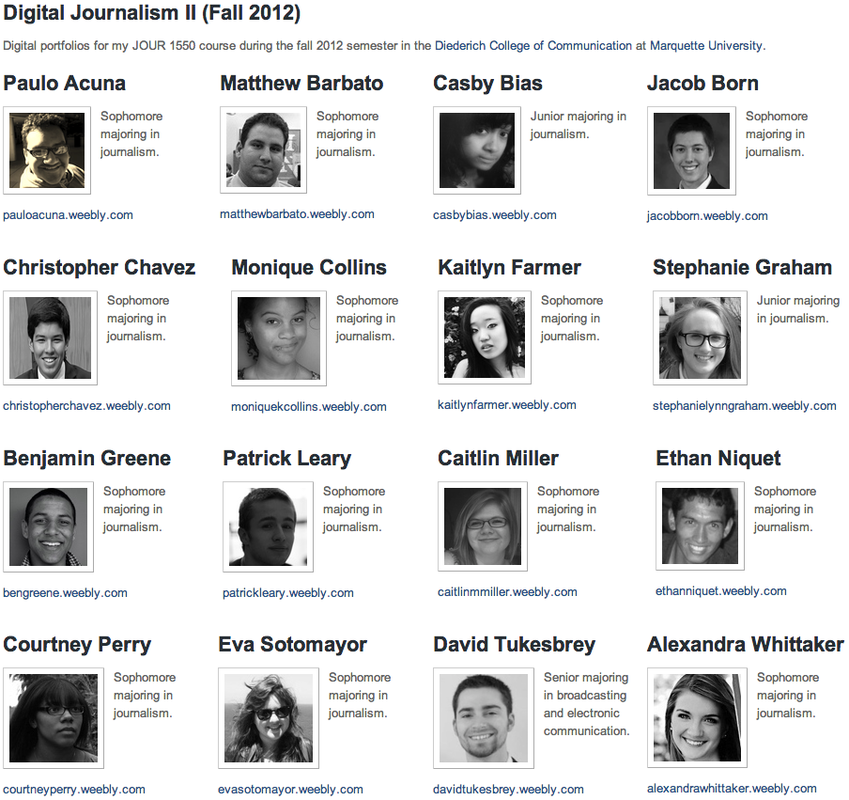
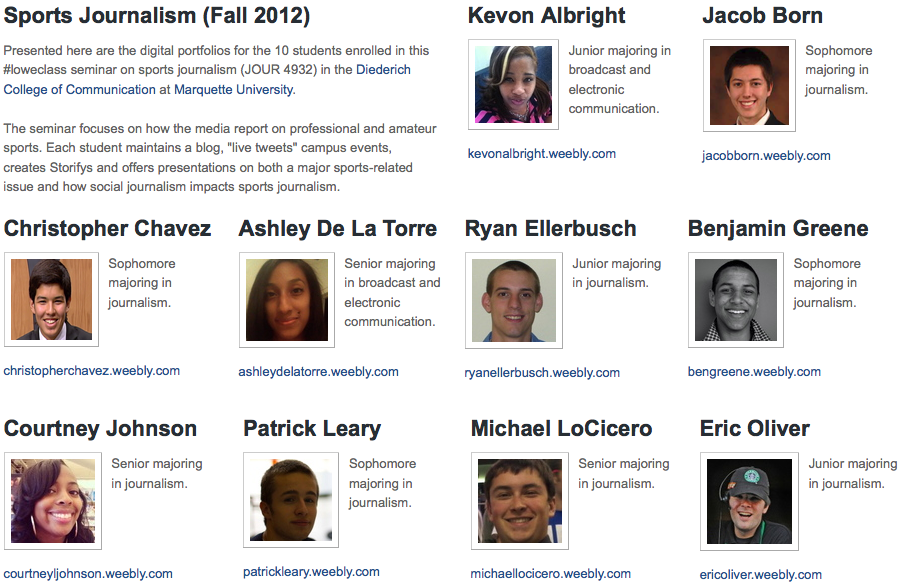





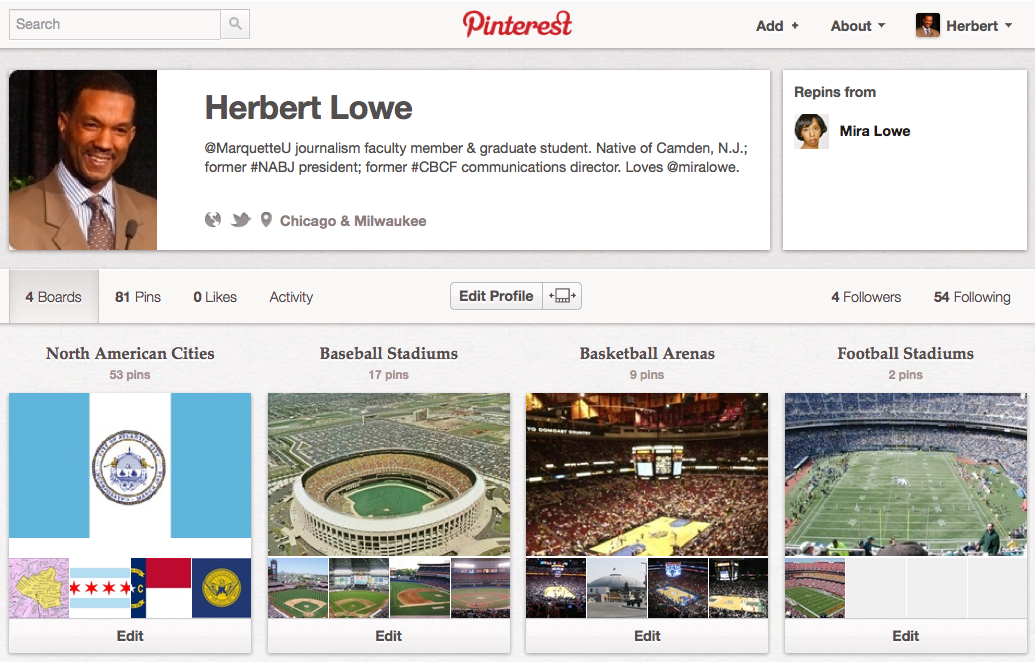
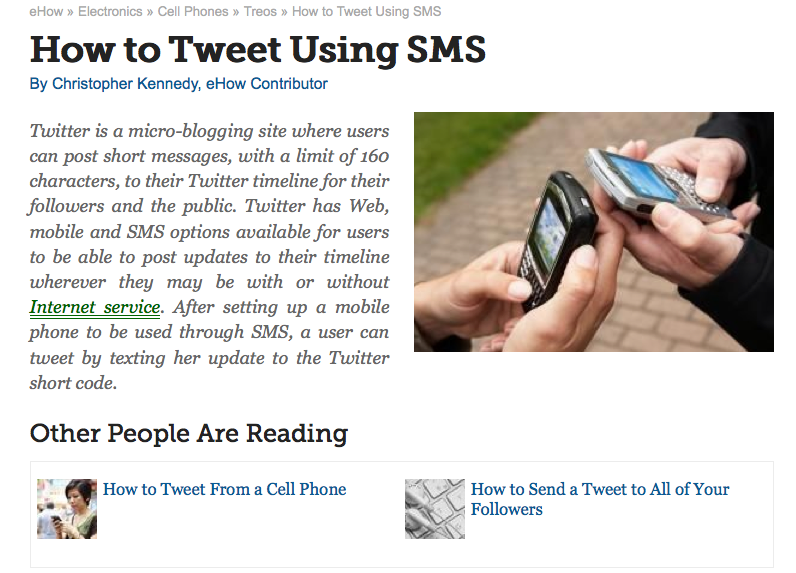
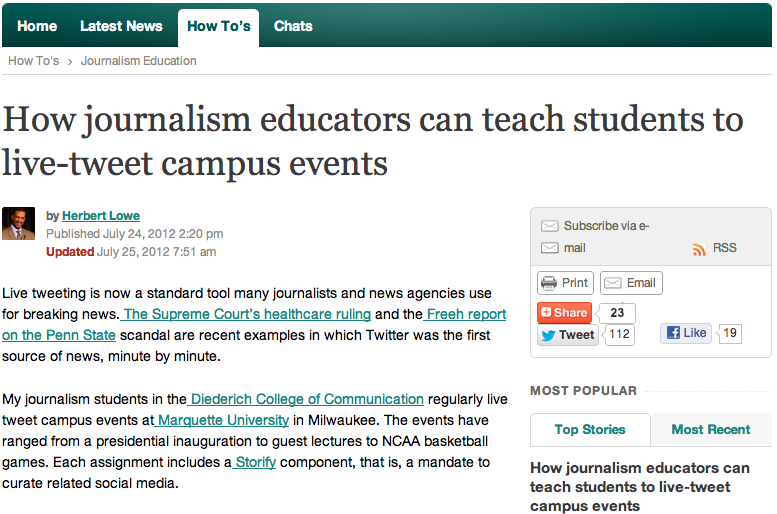
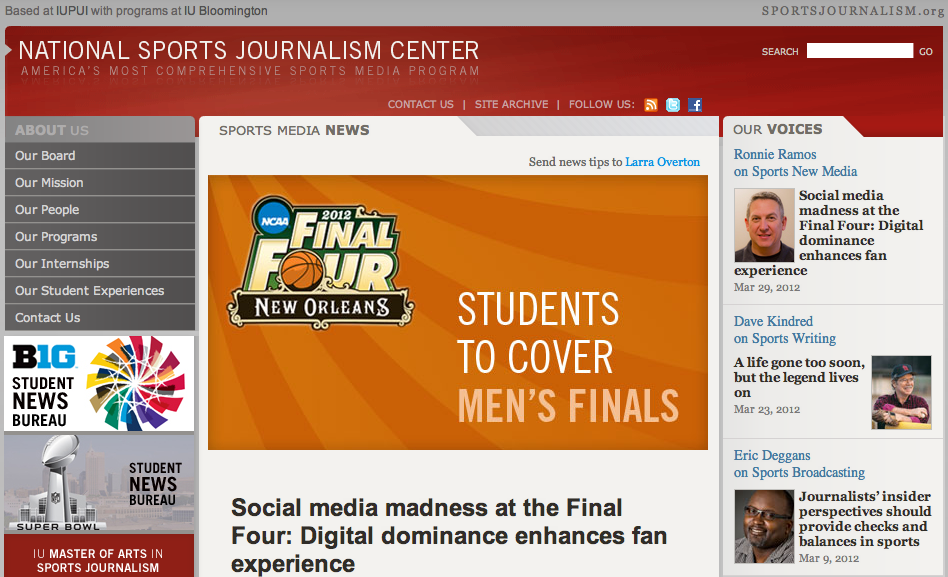
 RSS Feed
RSS Feed
